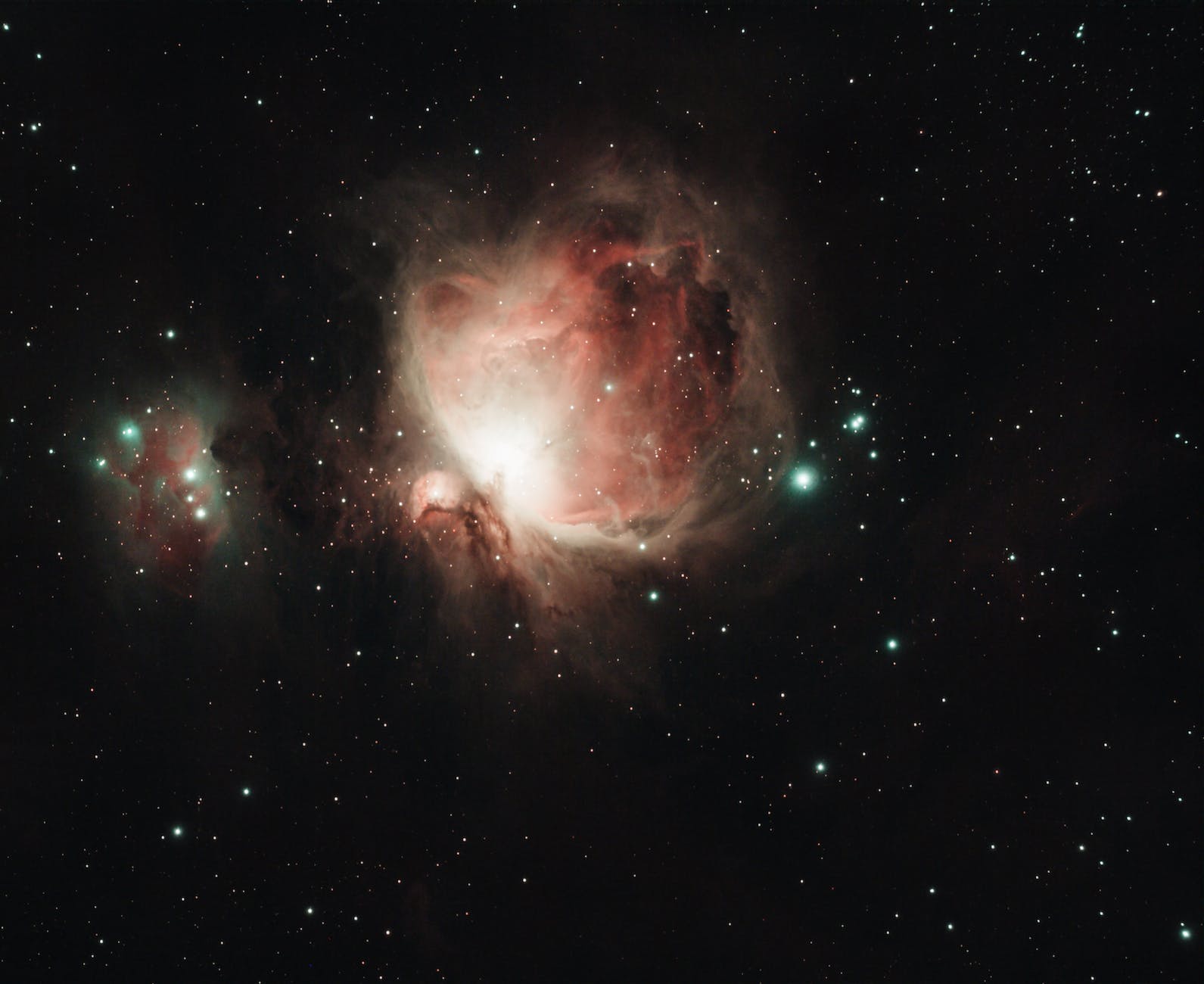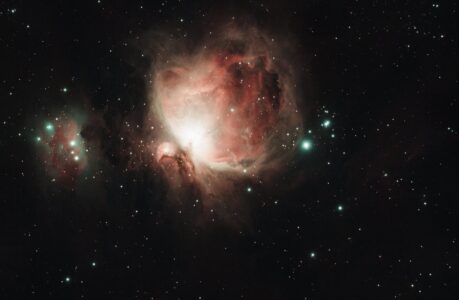Unlocking the Mysteries of the Emerald Isle’s Celestial Beauty
Introduction
The crisp winter nights in Ireland are a magical time when the sky comes alive with celestial wonders. From the dancing Northern Lights to the gleaming constellations, the Irish night sky offers a breathtaking spectacle for stargazers and astronomy enthusiasts alike. In this extensive exploration, we’ll embark on a celestial journey and unveil the top 10 wonders of the Irish night sky during the winter months. Grab your telescopes and binoculars, as we delve deeper into these hidden gems that adorn the heavens above the Emerald Isle.
1. The Aurora Borealis: A Dance of Lights
The enchanting phenomenon known as the Northern Lights, or Aurora Borealis, is a celestial spectacle that graces the Irish skies during the winter months. This breathtaking display of colorful lights is caused by charged particles from the sun colliding with gases in the Earth’s atmosphere. The result is a mesmerizing dance of vibrant colors, including shades of green, pink, and purple.
Every sighting of the Aurora Borealis is a unique experience, as the colors and patterns are ever-changing. On certain nights, the sky seems to come alive with curtains of light that sway and ripple, creating an otherworldly atmosphere. It’s a reminder of the beauty and power of the universe, right above our heads.
Check out this stunning time-lapse video capturing the Aurora Borealis in Ireland.
2. Orion’s Belt: The Hunter’s Glory
One of the most recognizable constellations in the night sky is Orion, the Hunter. During winter evenings, Orion’s Belt, a trio of bright stars, shines prominently. Named after the legendary Greek hunter, this constellation has fascinated stargazers for centuries.
Orion’s Belt is part of a larger constellation that includes his sword, bow, and shield. The three stars in the belt, Alnitak, Alnilam, and Mintaka, are not only visually striking but also serve as navigation points for identifying other celestial objects. Follow the belt downward to discover Orion’s sword, where the famous Orion Nebula resides—a stellar nursery where new stars are born.
Learn more about Orion’s Belt and its mythology.
3. The Pleiades: Seven Sisters
The Pleiades, also known as the Seven Sisters, is a stunning open star cluster that graces the Irish winter sky. With the naked eye, you can spot a cluster of seven bright stars. In mythology, these stars represent seven sisters who were pursued by the hunter Orion.
As you gaze upon the Pleiades, you’ll notice that some of the stars appear to twinkle more than others. This twinkling, caused by the Earth’s atmosphere, adds to the charm of this celestial cluster. The Pleiades are best observed with binoculars or a small telescope, allowing you to see even more stars within the cluster and revealing intricate details.
Explore the mythology and science of the Pleiades.
4. The Milky Way: Our Cosmic Highway
The Milky Way, our galaxy, arches across the Irish night sky during winter. On clear, moonless nights, the Milky Way reveals its full splendor, with countless stars forming a luminous band across the darkness. Observing it away from light pollution is a humbling experience.
The Milky Way is a vast collection of stars, gas, and dust, and when viewed from within, it creates a breathtaking tapestry. It’s a reminder of our place in the universe and the countless other star systems that exist beyond our solar system. During winter, the Milky Way stretches from the constellation Cassiopeia in the north to Crux in the south, offering a celestial journey through our galaxy.
Discover the beauty of the Milky Way and how to photograph it.
5. The Geminid Meteor Shower: A Celestial Firework Show
Every December, the Geminid meteor shower graces the Irish night sky. This meteor shower is renowned for its brightness and vibrant colors, making it one of the most anticipated celestial events of the year.
The Geminids are unique in that they originate from an asteroid, 3200 Phaethon, rather than a comet like most meteor showers. As Earth passes through the debris left behind by this asteroid, the resulting meteors produce bright and colorful streaks across the night sky. Viewing the Geminids can be a memorable experience, and on peak nights, you can expect to see dozens of meteors per hour.
Plan your Geminid meteor shower viewing.
6. The Winter Hexagon: A Celestial Gem
The Winter Hexagon is an asterism—an unofficial star pattern—formed by connecting six bright stars from different constellations. This celestial gem is visible during the winter months and serves as a guide to other celestial wonders.
The stars that make up the Winter Hexagon include Sirius (in Canis Major), Procyon (in Canis Minor), Pollux (in Gemini), Capella (in Auriga), Aldebaran (in Taurus), and Rigel (in Orion). Connecting these stars with imaginary lines creates a hexagon shape. Using the Winter Hexagon as a reference point, you can easily locate other fascinating objects in the night sky, such as the Hyades star cluster and the Beehive cluster.
Learn how to find and identify the stars in the Winter Hexagon.
7. The Andromeda Galaxy: Our Neighboring Galaxy
On clear winter nights, the Andromeda Galaxy, our nearest spiral galaxy, graces the Irish sky. This celestial neighbor is visible with the naked eye and is a stunning sight through binoculars or a telescope.
The Andromeda Galaxy, also known as Messier 31 or M31, is approximately 2.5 million light-years away from Earth. Despite its distance, it appears as a faint, elongated smudge in the sky. With a telescope, you can observe the galaxy’s spiral structure and even some of its smaller satellite galaxies. It’s a humbling experience to realize that you are witnessing a cosmic object that is similar in structure to our own Milky Way.
Explore the Andromeda Galaxy and its significance.
8. The International Space Station: A Human-made Star
The International Space Station (ISS) often passes overhead, appearing as a bright, moving star-like object in the night sky. Its regular appearances offer a unique opportunity to witness human space exploration from the comfort of your backyard.
The ISS orbits the Earth approximately every 90 minutes, so it frequently crosses the night sky. During a pass, it can be as bright as Venus and is easily visible without any optical aids. Tracking the ISS is not only a reminder of our ongoing presence in space but also a testament to international cooperation in space exploration.
Track the ISS and witness its passes over Ireland.
9. The Zodiacal Light: A Pyramid of Light
The Zodiacal Light, often mistaken for light pollution, is a faint pyramid of light that extends upward from the horizon after sunset or before sunrise. This phenomenon is caused by sunlight scattering off dust particles in our solar system.
The Zodiacal Light can be a challenging but rewarding sight to observe. To see it, you need dark skies and a clear horizon, away from the glare of city lights. It’s best viewed during the twilight hours when the sky is neither completely dark nor fully illuminated. The Zodiacal Light serves as a reminder of our place in the solar system, as the dust particles it illuminates are remnants from the formation of our planets.
Learn more about the Zodiacal Light and how to spot it.
10. The Winter Solstice: A Cosmic Calendar
The Winter Solstice marks the shortest day and the longest night of the year in the Northern Hemisphere. It’s a pivotal event in the cosmic calendar, signaling the start of winter and the gradual return of longer daylight hours.
The Winter Solstice has been celebrated by cultures around the world for millennia. It’s a time when people gather to observe the changing of the seasons and the promise of the sun’s return. In astronomical terms, the Winter Solstice occurs when the North Pole is tilted farthest away from the sun, leading to the longest night of the year. It’s a moment to reflect on the cycles of nature and our planet’s journey through space.
Discover the science and traditions surrounding the Winter Solstice.
Conclusion
The Irish night sky in winter is a treasure trove of celestial wonders waiting to be explored. From the dazzling Aurora Borealis to the mythical constellations and meteor showers, each night brings new opportunities for stargazers to connect with the cosmos. So, bundle up, venture out into the crisp winter air, and marvel at the beauty that adorns the night sky of the Emerald Isle.
Remember, the key to experiencing these celestial wonders to the fullest is to escape light pollution. Find a dark spot, away from city lights, and let the Irish night sky reveal its true splendor.
Disclaimer: The information provided in this article is subject to change based on the time of year and celestial events. Be sure to check local astronomical resources and event calendars for the most up-to-date information on stargazing opportunities in Ireland during the winter season.

